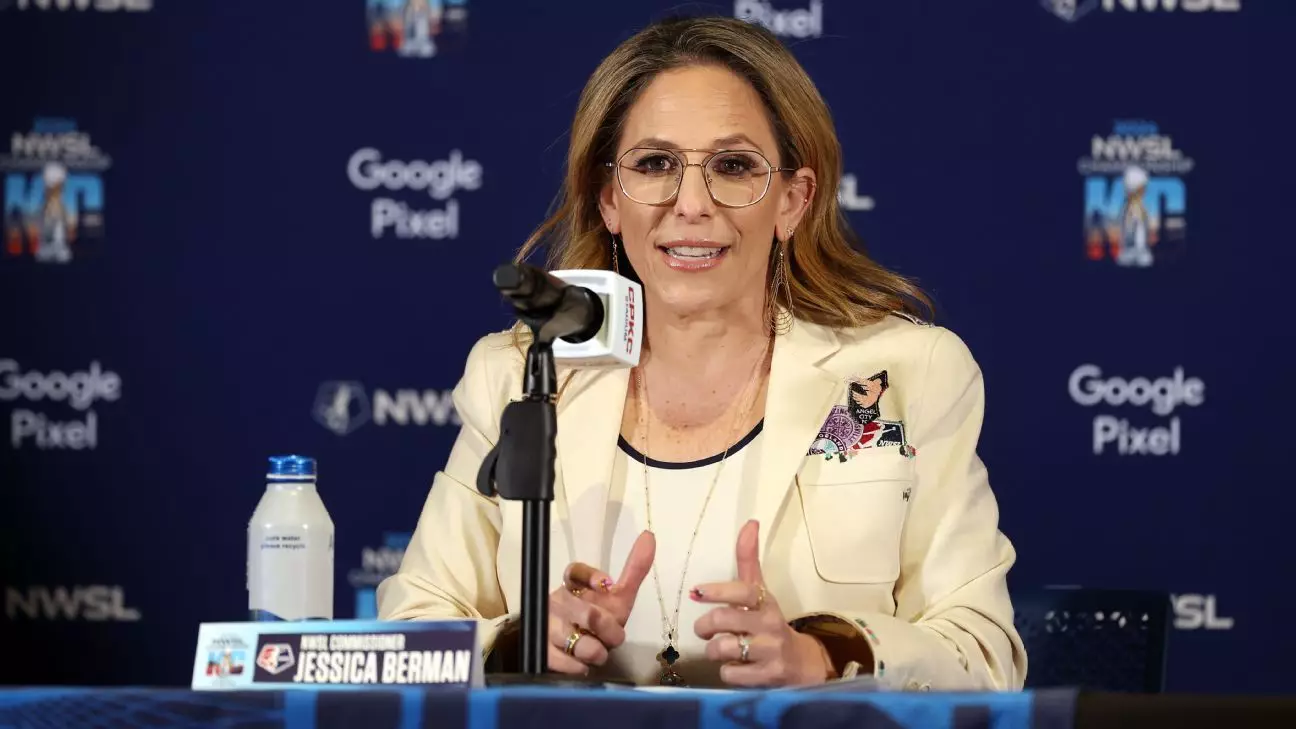The National Women’s Soccer League (NWSL) is on the brink of a significant transition as it prepares to expand its footprint and redefine its organizational structure in anticipation of the 2025 season. Recent announcements from Commissioner Jessica Berman indicate a robust commitment to growth and innovation within the league, setting the stage for a new chapter in women’s professional soccer. With the impending announcement of a 16th franchise, reportedly based in Denver, the NWSL’s expansion efforts signal a broader strategy focused on sustainability and market dynamics.
Jessica Berman has made it clear that NWSL’s expansion efforts are far from over. The upcoming announcement regarding Denver’s franchise will mark a milestone but is just one piece of a much larger puzzle. Berman noted that there exists a healthy pipeline of potential franchise buyers, demonstrating a strong interest in the league’s growth opportunities. While some have speculated about possible future markets, the emphasis remains on ensuring that the right ownership aligns with the league’s vision and objectives.
This reality suggests a deliberate and calculated approach to expansion. Unlike other professional leagues that might hastily award franchises to capitalize on interest, the NWSL’s strategy hinges on the quality of ownership, facility infrastructure, and market potential. Berman’s insistence on meeting “the standards not just of today, but of where we think the league is heading” underscores a forward-thinking mentality that prioritizes long-term growth over short-term gains.
Berman highlighted infrastructure as a crucial component of future expansion. Beyond attracting fans to games, the importance of high-quality training facilities and stadiums cannot be understated. In a league where player development and the overall experience are paramount, having facilities that meet professional standards is non-negotiable. This focus illustrates a commitment to elevating the league’s status, showcasing its ambition to align with successful models from other professional sports.
Moreover, the infrastructure foundation will likely play a pivotal role in how cities are evaluated as potential markets. Rather than an arbitrary selection process, a city’s existing sports landscape, community engagement, and capacity for growth will become critical in the league’s future decisions. Berman’s mention of at least 10 to 12 viable markets indicates a wealth of opportunity ahead, but it comes with the responsibility of choosing wisely.
As the NWSL gears up for the 2025 season, the absence of a college draft and the introduction of free agency will drastically alter its operational landscape. The league stands on uncharted territory as it transitions from one systematic approach to another, making the upcoming adjustments a significant learning experience for all stakeholders involved. The collaborative agreement between the league and the NWSL Players Association represents a pivotal shift that empowers players while simultaneously challenging the league’s established processes.
Berman’s acknowledgment of the learning curve inherent in this transformation speaks to the uncertainties involved in redefining contracts and player placements. The exodus of players seeking new opportunities, alongside the logistical actions required to fill those vacancies, will create a complex environment that necessitates clear communication and procedural refinement. For a league founded on principles of equity and competitiveness, navigating these changes effectively is vital to ensuring that the players, teams, and fans remain engaged and satisfied.
With the introduction of innovations such as a Rivalry Weekend and the return of Decision Day, the future of the NWSL looks promising. Berman’s keen focus on both preserving the essence of women’s soccer and amplifying its presence in the broader sports community highlights the league’s dedication to enhancing the overall fan experience.
As the NWSL engages in this ambitious expansion and restructuring, adaptiveness and strategic foresight will govern its success. The foundation being laid today is predicated on understanding not just where the league is but where it aspires to be. As more teams enter the league, along with new market realities, the NWSL is poised to emerge as a significant player in the soccer landscape, continually propelling women’s sports into the national consciousness. The league stands not merely at a crossroads but at the brink of a potentially transformative era, one that could redefine the very fabric of sports as we know it.


Leave a Reply